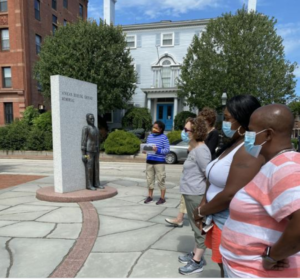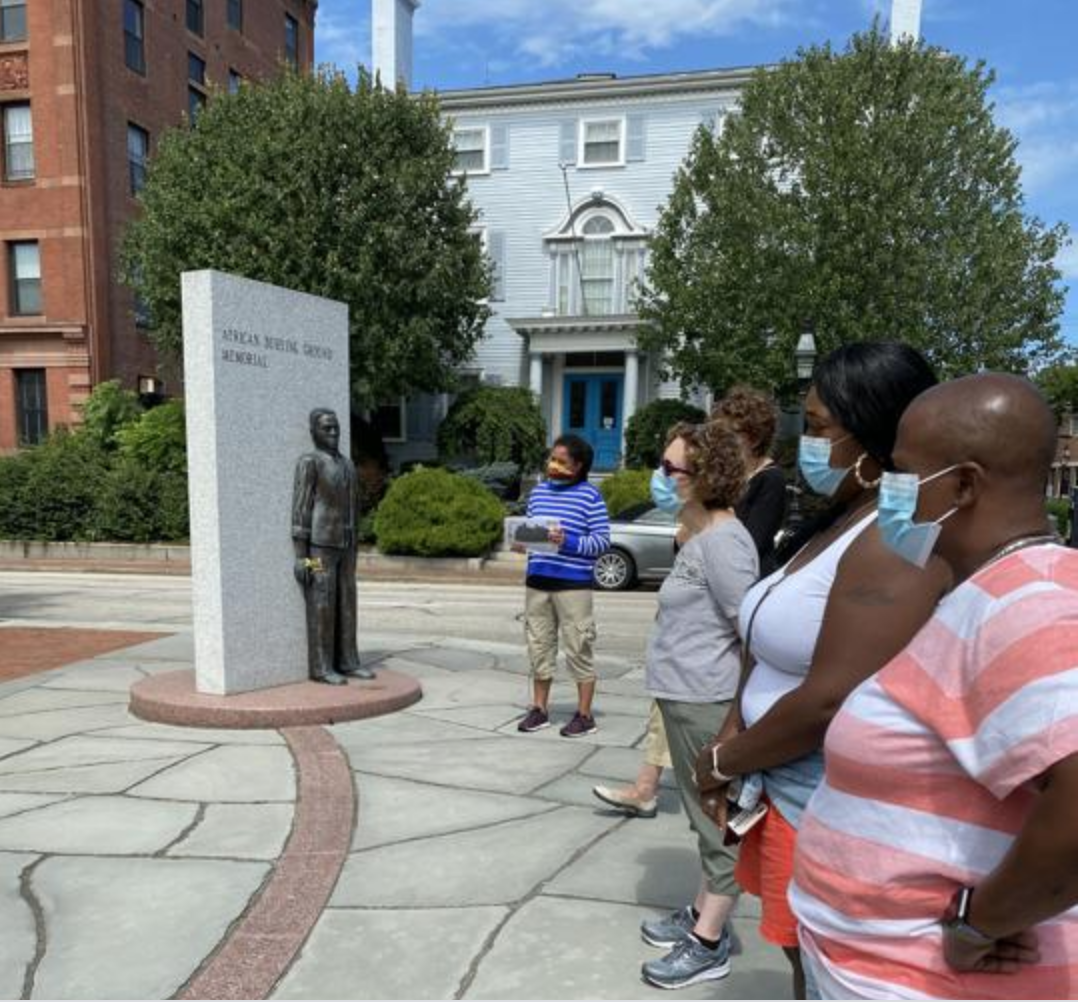
PORTSMOUTH – Our small tour group is walking through Portsmouth on a sunny Friday morning. Our guide points out sites along the way — a stately mansion with an ornate fence, the North Church steeple towering over Market Square, and the picturesque waterfront vista stretching behind it all.
A stream of coffee-getters meanders around Market Square, and the steady banging of construction projects already competes with the rev of motorcycles and car horns of resident and tourist traffic. But somehow it still feels too quiet from where I’m standing.
There’s a silent awkwardness that hangs over our group as we weave around a mile-long stretch of this historic seaport. Attempts at conversation feel a bit stilted — something made more pronounced by the pandemic-forced masks that hide our expressions.
There are six of us — four from New Hampshire and two from Connecticut — on this tour of the Black Heritage Trail of New Hampshire (BHTNH).
This isn’t a fun, feel-good kind of walk. We’d all signed up for a Sankofa Walking Tour entitled “Port of Entry: Boys and Girls for Sale.” I had known this side of Portsmouth’s history, but after the past six months of social, political and racial unrest in the country, I wanted to see what this experience might feel like at a time when people are both paralyzed by uncertainty and galvanized by conviction.

